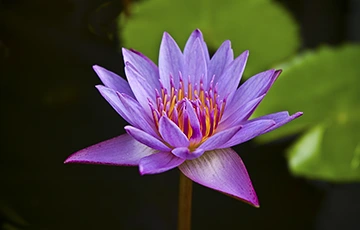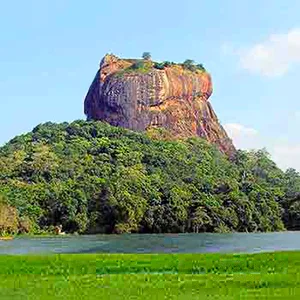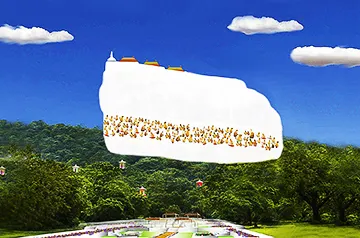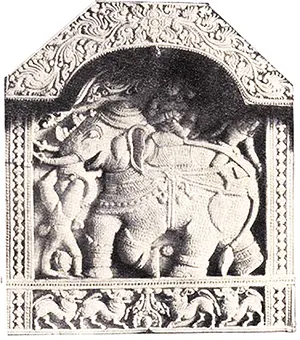King Kashyapa of Sigiriya

Photo: Lotus flower in a pond at Sigiriya
Contents
Who Was Kashyapa?
Kashyapa I (also known as Kasyapa or Kassapa) is best remembered for building the stunning 1500 year old Sigiriya Rock Fortress on top of a 600-foot-high pillar of solid rock in Sri Lanka. He ruled the Anuradhapura Kingdom in Sri Lanka from 473 to 495 CE. Today, Sigiriya, Kashyapa's masterpiece, stands as a UNESCO World Heritage Site and a testament to a historical figure who left an indelible mark on the world's cultural heritage.
Kashyapa Early Years
Kashyapa was the son of King Dhatusena the first king of the Moriyan Dynasty. Dhatusena had initially trained to become a Buddhist monk but took up arms to liberate his people from foreign invaders. During a gruelling ten-year guerrilla campaign, Dhatusena took up a relationship with a lower caste village girl and had a son named Kashyapa. Upon becoming king, Dhatusena discarded his low-caste lover and married a woman of a royal bloodline. Kashyapa however, was brought to the palace grew up there. Despite being the eldest son, Kashyapa was not considered the heir apparent because of his non-royal birth status. Instead, his younger brother Moggallana, born to the royal queen, was next in line for the throne.
Kashyapa Murders his Father
Many years later, Dhatusena earned the wrath of the chief of his army Migara, who was his nephew and also his son-in-law, by murdering Migara's mother, who was also Dhatusena's sister. Enraged by the murder of his mother, Migara estranged Kashyapa from his father by exploiting Kashyapa's deep-felt resentment for being overlooked as the heir apparent. Together they overthrew Dhatusena, and Kashyapa seized the throne. Prodded on by a vengeful Migara, Kashyapa ordered Migara to rid him of his father. After humiliating Dhatusena, Migara had him buried alive in the wall of his prison cell. The younger Moggallana, fearing for his life, fled to India.
SIGIRIYA - Novel

Palace intrigue, passion, deceit, betrayal and tragedy. Set fifteen hundred years ago, this compelling novel weaves historical facts into a remarkably entertaining story of fate, dangerous alliances, enduring friendships, and forbidden love. Available in Ebook and Paperback.
Where to Buy This BookRejected by the People
Kashyapa did not personally kill his father. But the mere fact that he may have been a part of the plot meant that he had committed a cardinal sin in Buddhism—that of intentionally murdering one's father. Unable to redeem himself with the Buddhist clergy and his people, he grew increasingly fretful. He performed many good works and acts of repentance, but the Buddhist clergy and the people rejected all these.
Why Was Sigiriya Built?

Photo: View of Sigiriya Rock
Finally, wary of this rejection, Kashyapa abandoned his royal capital city of Anuradhapura and set out to build himself a new capital far away from the disapproving masses. Here he hoped he would find solace for his troubled mind.
The inspiration for Kashyapa's new city was the mystical city of Alakamanda. In Buddhist mythology, Alakamanda was said to be the wealthiest and most beautiful city imaginable. It was a city of the gods built amongst the clouds. Alakamanda was ruled by Kuvera, the god of wealth and plenty. Thus inspired, Kashyapa set about creating his version of an earthly paradise.
Kashyapa choose an area deep in the inhospitable forests of north-central Sri Lanka as the site for his new city. The most dominant feature of the area was a massive rock, which rose vertically to a height of nearly 600 feet. Here he would build his city and a magnificent sky palace on top of this rock. Kashyapa found his inspiration and the perfect location for his new city.
Kashyapa Builds Sigiriya

Photo: Artist's impression of Sigiriya with Frescoes
Monarchs of Sri Lanka were usually constrained by their Buddhist faith from indulging in acts of self-indulgence. Consequently, there are no significant structures in Sri Lanka built in the glorification of a king. Having being rejected by the religious establishment, however, Kashyapa no longer felt bound by these constraints. He chose, therefore, to use the vast wealth and resources of his kingdom to create an extravagant masterpiece for himself.
The centerpiece of the new city was the royal citadel with beautiful tropical gardens with extensive water features. He painted the once sinister-looking rock white and then created a spectacular multi-colored tapestry which we know today as the Sigiriya Frescoes. He built a massive gatehouse and staircase, the Lion Staircase, to guard the final entrance to his gleaming white Sky-Palace in the clouds.
Kashyapa's Idyllic but Tormented Life
Surrounded by his royal court and his harem and far away from the hustle and bustle of the capital city Kashyapa lived an idyllic existence at Sigiriya. He encouraged the arts and enjoyed poetry. However, being a sensitive man, he was deeply troubled by his responsibility for the death of his father. We are told that he diligently carried out his religious duties, no doubt hoping to find some salvation for his troubled conscience.
Confrontation between Kashyapa and Moggallana

Photo: Royal war elephant
In about the fourteenth year of Kashyapa's rule, Migara, angry that Kashyapa did not permit him to conduct a large religious festival, secretly switched his allegiance from Kashyapa to his younger brother Moggallana. On hearing this news, Moggallana, who had been languishing in India, clandestinely returned with a ragtag collection of friends and hangers-on and set up camp in a distant part of the country.
When Kashyapa got wind of his brother's return, he decided immediately to confront Moggallana head-on. Ignoring the dire warning of his soothsayers who predicted disaster, he left the relative safety of his fortress at Sigiriya to confront Moggallana. He had reason to be confident he had a large army controlled by Migara, his brother-in-law and accomplice.
The Death of Kashyapa
Mounted on his mighty war elephant, the king led his army into battle. Migara followed close behind. Sensing a swamp ahead of him, Kashyapa turned his elephant away to find firmer ground. At this very moment, Migara put his defection plan into play. He signaled the army to retreat. The king's grand army broke and fled. Abandoned and alone, Kashyapa unsheathed his jewel-encrusted dagger and placed its cold blade against his neck. Quickly he drew it across his neck and slit his throat. All was quiet now. The royal elephant stood listless; its magnificent trappings strained crimson with the king's blood.
Moggallana, still respectful of his fallen older brother, accorded him a royal cremation. The stupa at Pidurangala is believed to mark the spot where Kashyapa was cremated.
Epilogue
Kashyapa was a much-maligned but gentle ruler. There are no records of any other transgressions committed by him. He was an artistic soul caught up in dynastic intrigue, deceit, and betrayal. We do not know if he found solace in the afterlife. We do know, however, that his masterpiece at Sigiriya has stood for over a one thousand six hundred years and brought him immortality.
